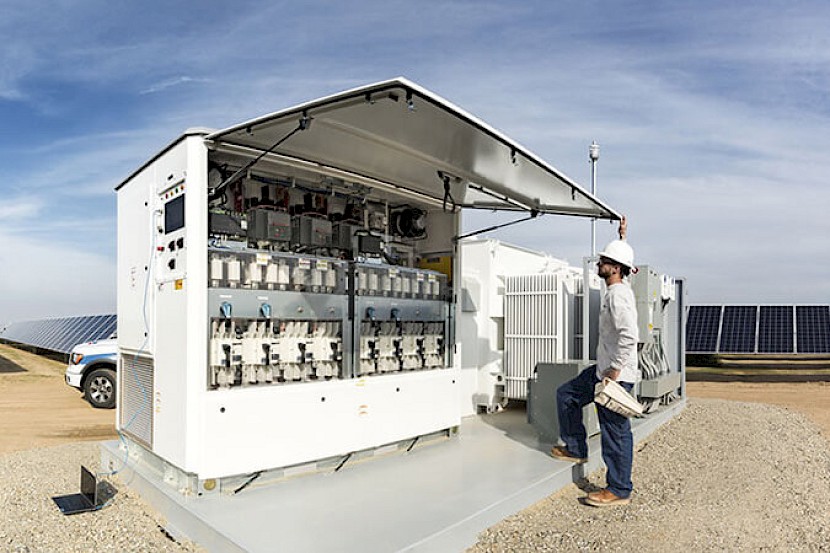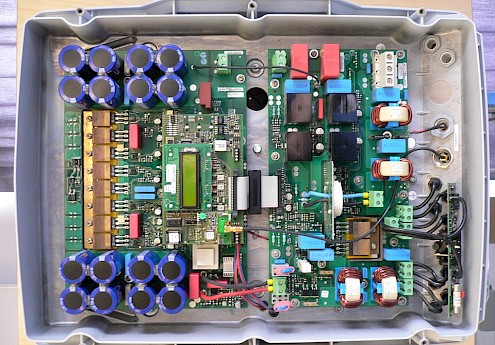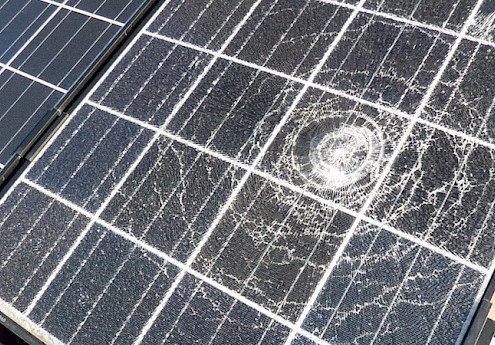
Innovative central inverters for renewable energies
Inverters are important components, especially in large photovoltaic systems, which convert the direct current from the generators of the solar modules into alternating current in order to feed it into the power grid. They are very flexible in use and react at lightning speed to the smallest changes in weather conditions. In addition, inverters are able to work with both low and high input voltages, resulting in a wide range of possible designs and applications.
Depending on the range of functions and the type of use, a distinction is made between central inverters, module inverters and string inverters. Module inverters are mounted directly on the solar module, while string inverters are connected decentrally in parallel in several rows of solar modules.
This is how central inverters work
In a central inverter, the input voltages of the solar generators are brought together in a central system, which is a great advantage, especially for photovoltaic systems with similar properties in terms of construction and technical equipment. For the most part, central inverters are found in large solar parks, because the use of many string inverters would not make sense here due to the high maintenance costs. Central inverters are also usually used in large systems of industrial companies and in industrial photovoltaic systems. Thanks to their very high level of efficiency, they are also ideally suited for power plants with an output of several megawatts.
Advantages of central inverters in use
New and innovative central inverters increase the efficiency of the solar system by up to 40%. This is a significant increase over previous models. They have a high output of up to 1.44 megawatts, which sometimes entails savings of up to 30%, above all by reducing the number of inverters used.
In addition, central inverters even forward the alternating current with a voltage of up to 20,000 volts directly to the public power grid. Thanks to the fact that the most important areas of the central inverter are protected from external influences and are wind and waterproof, they can also be used in extreme climatic conditions such as high heat and cold down to -50 degrees Celsius.
Another advantage is the efficient use of the inverter thanks to an intelligent energy management system. At times of low sun intensity, the system takes its power from its own batteries, which are charged at times when the sun is intense.
A disadvantage of the central inverter is that if the central inverter fails, the entire system is shut down for a while. Furthermore, large heat losses of up to 288 kW (Solar Max Power) can be observed in these systems, which is a direct consequence of the high output.
However, manufacturers often offer complete packages with extensive maintenance and service contracts. Most of the maintenance work can also be planned by remote control and remote monitoring using an administration and monitoring system. In this way, any faults are immediately registered and quickly eliminated.
Innovative solutions on the market

One of the market leaders in the field of photovoltaic inverters is the German company SMA. The company produces a wide range of high-tech models for large and small solar parks. Thanks to their high power density, SMA products are particularly suitable for outdoor use.
On the one hand, the OptiCool technology offers high-quality protection against overheating, on the other hand, the system is particularly safe during earthquakes, storms and other weather conditions. The maintenance and logistics costs are also reduced to a minimum here thanks to intelligent sensor systems.
The company SolarMax from Bavaria offers comprehensive solutions for central inverters. Thanks to the particularly compact design of the systems, a high power density is achieved, which is directly reflected in the high efficiency of up to 98%. There are ready-made solutions for both medium-sized plants and large power plants. Complete monitoring of the entire system via remote control and innovative safety systems ensure long-lasting, reliable and safe use.
These are just two examples of the wide range of central inverters on the market. Before buying a new system, however, you always have to plan carefully, no matter which model you choose. Depending on the size, type and scope of the systems, there are significant price differences. The location is also important. Furthermore, in some solar parks it can make sense to use several smaller central inverters instead of one large one due to the construction and different functionality of the modules. A selection of used, new and reconditioned inverters as well as extensive information can be found at SecondSol.




